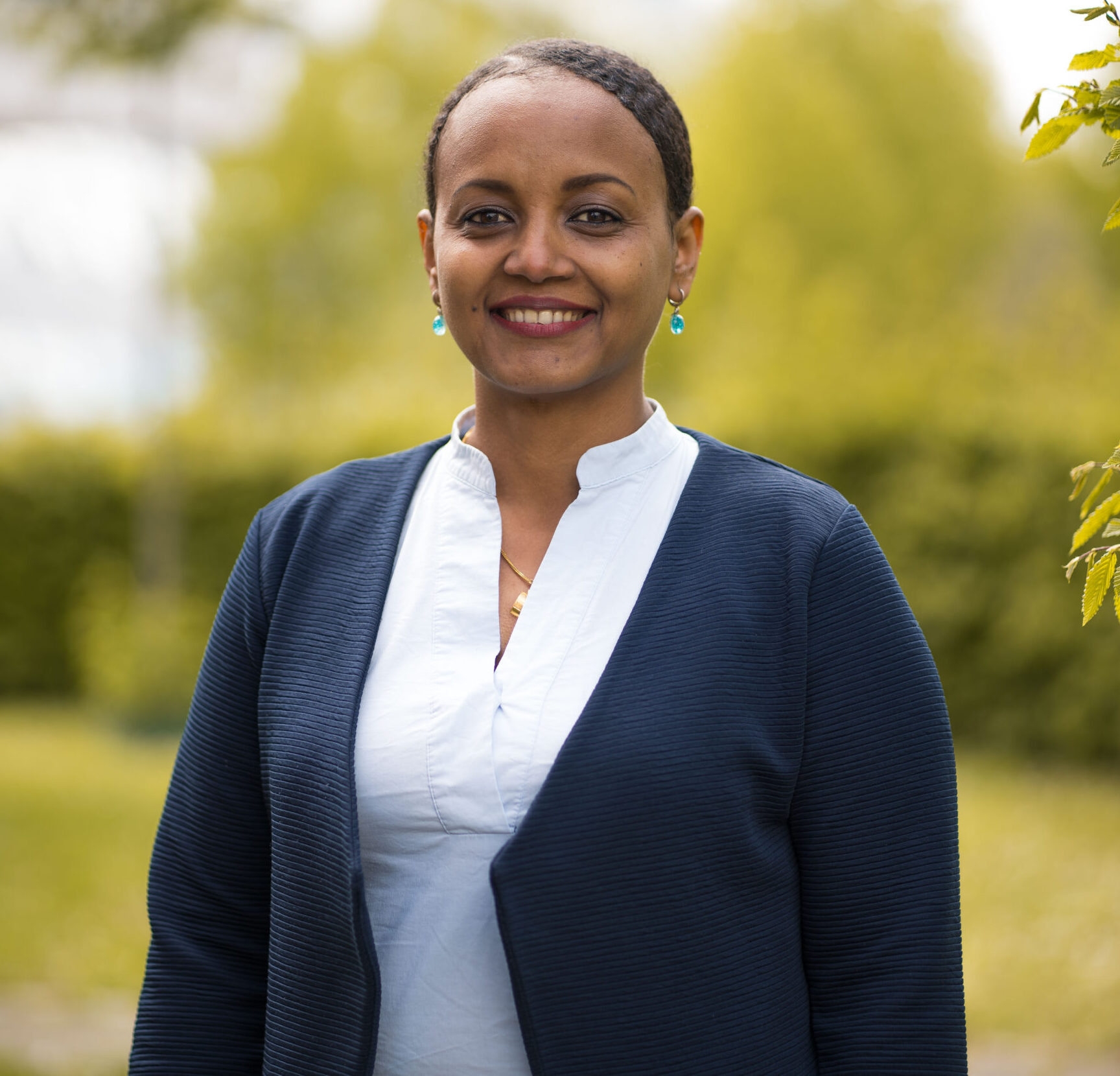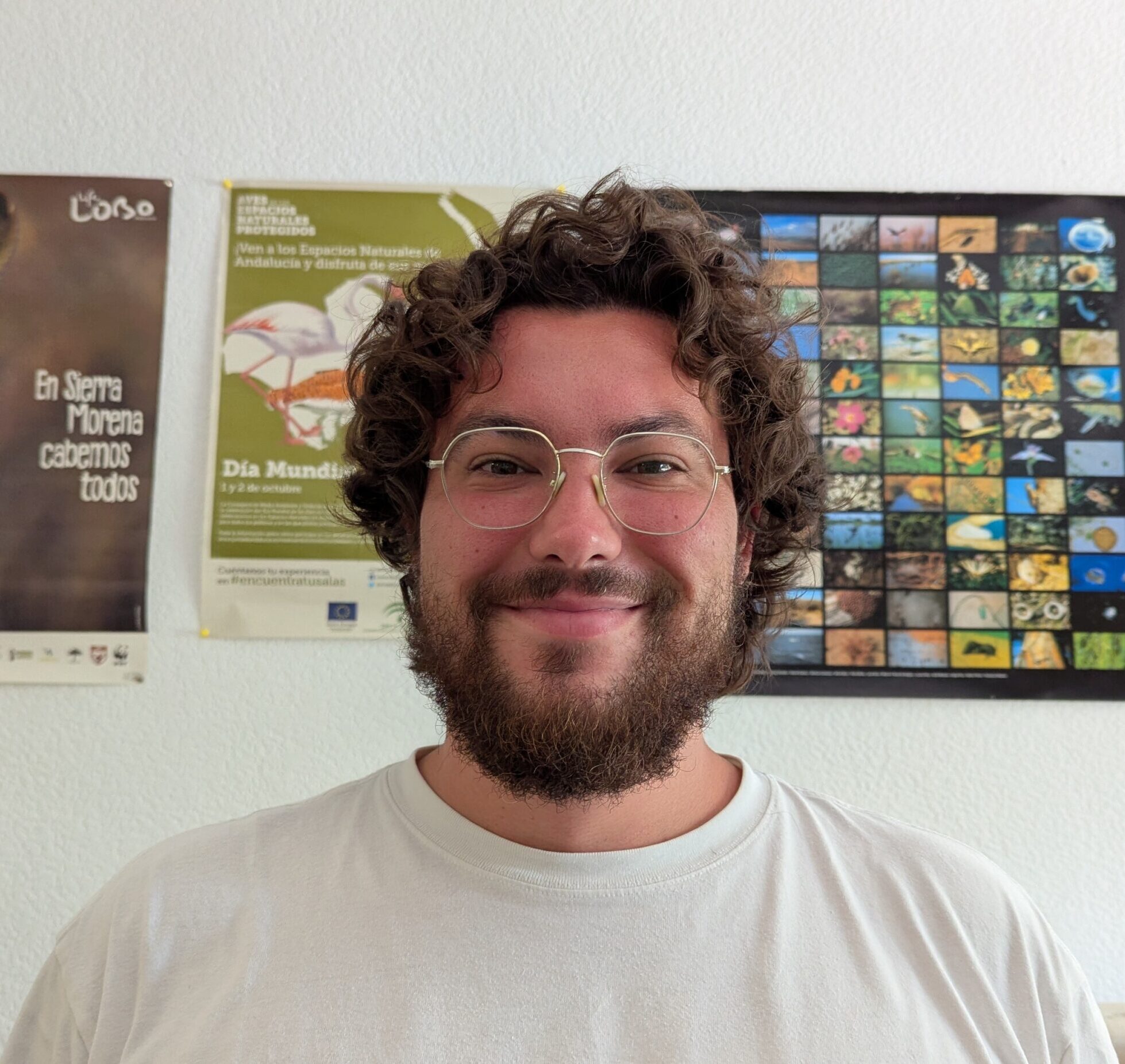Time
11.00 – 12.30
Room
ARIA
Chaired by
Koen Vervoort
Type of Session
Research Session
Description
Following the evaluation procedure the OLLD evaluation committee has accepted the research papers. All papers reflect on the theme of the conference “LIVING LABS FOR REGENERATIVE FUTURES: Connecting Local and Global Innovation Ecosystems ” and have been classified according to its sub-tracks. These are: TRACK 1: Living Labs for Grand Societal Challenges; TRACK 2: Living Labs for Policies, Governance, collaboration and innovation ecosystems; TRACK 3: LLs for Inclusive Soci(et)al Engagement; TRACK 4: Living Labs for Business and Emerging Technology; TRACK 5: Living Labs Operation, Methods, Tools, and Impact.
Papers selected by the Evaluation Committee
- Optimizing data collection planning for Living Labs' access and effectiveness
- The impact of Living Labs on mobility behaviour of active mobility users in East African context
- The backbone and the bridges: Central influence and collaborative integration in Living Labs scholarship
- Beyond "lab washing": A methodology for social impact assessment in Living Labs
- Assessing stakeholder dynamics in a restoration ecology Living Lab
- Assessing the impact of responsible digital social innovation: The case of the Catalan digital living Lab
Optimizing data collection planning for Living Labs' access and effectiveness
Abstract: This paper introduces a framework to optimize data collection planning in studies conducted within Living Labs. It emphasizes identifying what additional data—beyond the main study datasets—should be gathered to assess the effectiveness of Living Labs when accessed by external researchers or innovators. The framework is informed by the VITALISE project, in which 116 external researchers utilized Living Lab services across 56 Research Infrastructure Access studies. It outlines the types of data collected, such as services requested, researcher and staff time investment, and expectations before and after the studies. The framework details both individual dataset outputs and the insights gained from analyzing combined datasets. The findings aim to support a deeper understanding of how Living Labs function as research infrastructures and how their impact can be effectively measured.
Key words: living labs; research infrastructure; services; effectiveness; data collection framework; access.
Evdokimos Konstantinidis
Postdoc Researcher at Thess-AHALL

Evdokimos Konstantinidis
Postdoc Researcher at Thess-AHALLDr. Evdokimos I. Konstantinidis is the Chairperson of the European Network of Living Labs (ENoLL) with more than 170 members worldwide, coordinator of the Health and Wellbeing Living Labs Working Group and postdoc researcher at the Medical Physics and Digital Innovation Lab, Aristotle University of Thessaloniki. He coordinated the Research Infrastructure H2020 project, VITALISE – aiming to harmonize the procedures of Health Living Labs. He is currently the coordinator of the RAISE Horizon Europe funded project on services for the European Open Science Cloud and the Horizon Europe project Engaging the Value of Living Labs to Innovate Care and Regulatory Environments as a response to the call for experimentation frameworks.
The impact of Living Labs on mobility behaviour of active mobility users in East African context
Abstract: Walking and cycling are the most prevalent modes of transport in Africa, with over a billion people relying on them daily. Yet poor-quality infrastructure continues to push many toward motorized transport. Before investing in costly, long-term projects, living labs offer a low-cost, flexible, and community-driven way to test and improve street design. Using a bottom-up approach, living labs empower communities to reimagine streets as inclusive, people-centered spaces.
This paper examines the impact of living labs on pedestrian and cyclist behavior in Mekelle, Ethiopia. The key mobility challenges were unsafe crossings, poor accessibility, narrow pedestrian spaces, and no cycling lanes. The living lab design was based on inputs from surveys and stakeholder engagements. The interventions included zebra crossing, widened walkways, bike lanes, greenery, and designated street vendor space. To assess its impact, surveys and drone imagery were collected before, during, and after implementation. Using YOLOv11, we created a dataset to analyze mobility patterns and users` behavior. The preliminary results showed most participants had never experienced a living lab before. The intervention was perceived as positive, improved pedestrian, cyclist, women and children’s volumes. Since safety, accessibility and market activity were improved the respondents suggested more car-free zones in the city.
Key words: Walking, Cycling, Africa, Living Labs/ real-life experiments, Ethiopia
Azeb Tesfaye Legese
Research Associate & PhD candidate University of Kassel

Azeb Tesfaye Legese
Research Associate & PhD candidate University of KasselAzeb Tesfaye Legese is an urban design expert and researcher specializing in sustainable mobility. She has conducted numerous studies on walkability, inclusive transportation, sidewalk design for non-motorized transport (NMT), mobility behavior of active mobility users in East Africa, the impact of Living Labs on mobility behavior, and the role of active mobility in promoting urban health and sustainability. She has also completed postgraduate training in Sustainable Mobility, Spatial Planning, and Urban Africa Scenario Thinking in the Context of Rapid Urbanization. Currently, Azeb is a Research Associate and PhD candidate in the Department of Cycling and Sustainable Mobility at the University of Kassel, Germany. She has international research experience in Ethiopia, Kenya, Uganda, Ghana, Namibia, and Germany. These engagements have provided her with valuable practical expertise in urban design and mobility systems.
The backbone and the bridges: Central influence and collaborative integration in Living Labs scholarship
Abstract: Over the past two decades, Living Labs have gained significant traction in both academic and practitioner communities. While the concept has been applied across diverse domains, concerns persist about its theoretical coherence and structural fragmentation. This study investigates the intellectual landscape of Living Labs research through network analysis, with a focus on two key hypotheses: the Central Influence Hypothesis (H1) and the Collaborative Integration Hypothesis (H2). H1 posits that a small set of authors and seminal publications form the backbone of the field, exerting disproportionate influence on its development. H2 explores whether scholarly collaboration in the field is characterized by cohesive sub-networks or significant structural disjunctions that limit interdisciplinary integration. Using a dataset of 2,358 unique publications, we construct and analyze co-authorship networks to identify central figures, collaboration patterns, and gaps in scholarly cohesion. Findings reveal that while the field is anchored by a concentrated group of influential authors, it remains structurally fragmented, with low cross-cluster integration and limited knowledge exchange across disciplinary or geographic boundaries. These dynamics present both opportunities and risks for the future of Living Labs: while core communities provide stability and shared vocabulary, the lack of broader connectivity may hinder theoretical advancement and practical innovation. We conclude by outlining strategic implications for research and practice, advocating for more inclusive, interdisciplinary, and longitudinal approaches to consolidate and expand the Living Labs knowledge base.
Key words: Living Labs, network analysis, co-authorship, knowledge ecosystems, interdisciplinary collaboration, research fragmentation
Silvia Fierăscu
Lecturer Faculty of Governance and Communication Sciences, West University of Timisoara & Founder and Leader of Social Fabrics Research Lab

Silvia Fierăscu
Lecturer Faculty of Governance and Communication Sciences, West University of Timisoara & Founder and Leader of Social Fabrics Research LabSilvia Fierăscu, PhD, is a passionate professor, a global trainer, an interdisciplinary researcher, and an RDI consultant in Applied Network Science in Social and Communication Sciences, Organizational Development and Change Management. Her work reflects entirely who she is as a professional – a purpose-driven educator and changemaker. Her diverse experience working in all sectors - business, government, academia, and civil society – feeds into her vision of a global movement towards more data-driven, evidence-informed decision making, human-centric work cultures, sustainable ecosystems of wellbeing, value creation, and innovation. At West University of Timișoara, Silvia is a lecturer in data analysis at the Faculty of Governance and Communication Sciences, where she founded and leads Social Fabrics Research Lab - a research, development and innovation lab in social sciences and digital media.
Beyond "lab washing": A methodology for social impact assessment in Living Labs
Abstract: This article introduces a process-oriented assessment methodology designed to address persistent challenges in Living Lab practice, such as lab-washing, social impact assessment, and assuring long-term, value-driven transformation and sustainability. Grounded in design ethnographic practice and embedding iterative and participatory engagements, the approach enables continuous reflection and adaptation rooted in real-life Living Lab contexts. Key methods – such as ethnographic deep dives, trading zones, Think Forward workshops, and assessment interviews – enable the identification of both intended and emergent social impacts while fostering community ownership and deep scaling. The article argues that embedding assessment throughout the lifecycle of a Living Lab enhances its credibility, strengthens collaboration across project streams, and better supports systemic change. In doing so, it offers a practical framework for moving beyond symbolic participation and toward authentic, context-sensitive transformation, specifically within EU-funded projects’ contexts.
Key words: Design ethnography, social impact, process-oriented assessment, living lab, deep scaling
Gregor Cerinsek
Senior Impact Strategist, Halmstad University

Gregor Cerinsek
Senior Impact Strategist, Halmstad UniversityGregor Cerinsek, PhD is a Senior Impact Strategist at Halmstad University, Sweden, and the Head of the Department for Applied Social Science Research at the Institute for Innovation and Development of the University of Ljubljana, Slovenia. With a PhD in cultural anthropology, his expertise lies in comprehending the structural dynamics and intricacies of European research and development projects as well as established project networks. His current ethnographic research work focuses on process-oriented and context-sensitive social impact assessment, participatory co-creation, and stakeholder orchestration in living lab settings.
Assessing stakeholder dynamics in a restoration ecology Living Lab
Abstract:
This study focuses on stakeholder collaboration within a living lab context. Living labs are often conceptualized as open innovation networks, where multiple stakeholders co-create, experiment, and learn together. This networked nature makes Social Network Analysis a particularly suitable array of methods to explore how collaboration evolves over time and analyze actors’ role in driving (or limiting) collective action.
We analyzed the stakeholder network of a living lab focused on ecological restoration in a semiarid desertification-prone area in southeaster Alicante (Spain). A baseline network was mapped at the beginning of the initiative, and participation indicators were collected to examine the relationship between stakeholder position in the network and his/her degree of engagement. A second data collection will capture how the network evolved, allowing us to assess the living lab’s impact on fostering collaboration.
This approach will identify key actors, reveal collaboration dynamics, and inform strategic decisions to enhance stakeholder participation and restoration outcomes. By applying SNA in this context, we contribute to improve our understanding of living labs as evolving ecosystems of governance, innovation, and co-creation.
Key words: Living labs, open innovation networks, stakeholder collaboration, social network analysis, restoration ecology, participatory governance
Andreu Ibáñez
PhD student in the Department of Ecology at the University of Alicante

Andreu Ibáñez
PhD student in the Department of Ecology at the University of AlicanteAndreu Ibáñez is a PhD student in the Department of Ecology at the University of Alicante, affiliated with the Instituto Multidisciplinar Ramón Margalef (IMEM). His thesis focuses on social participation in restoration ecology, with a particular emphasis on living labs as tools to connect science, practice, and local communities. He coordinates the Living Lab RENATUREM, a collaborative initiative that brings together researchers, practitioners, and stakeholders to address ecological restoration challenges in South Alicante. In this role, he organizes workshops and seminars, facilitate participatory activities, and manage communication to ensure knowledge flows effectively between science and society. Through his work, he explores how participatory approaches can strengthen restoration outcomes while fostering local engagement. By combining ecological research with social innovation, he aims to support strategies that are both scientifically robust and socially inclusive, helping to restore and protect Mediterranean landscapes.
Assessing the impact of responsible digital social innovation: The case of the Catalan digital living Lab
Abstract: Living Labs (LLs) are collaborative ecosystems designed to address complex societal and environmental challenges through multi-stakeholder participation. The Col·laboratori Catalunya project, launched by the Catalan government in 2019, aims to establish a regional digital LL by applying LL methodology within an Internet-based innovation ecosystem.
This study evaluates the project’s effectiveness, impact, and transformative potential across Catalonia, based on surveys and interviews with stakeholders from the Quadruple Helix. Results show positive effects on intersectoral collaboration, promotion of distributed digital social innovation (DSI), and acceleration of digital transformation in public and private organizations.
The project exemplifies responsible DSI, using ICTs to address societal challenges while upholding inclusion, ethics, and public value. It also highlights the role of public administration in enabling co-creation and influencing policy.
However, long-term success requires more sustainable frameworks and broader thematic coverage. The project offers valuable insights into how regional digital LLs can foster systemic and responsible innovation.
Key words: Digital Living Labs, Impact assessment, Internet, Collaboration, Quadruple Helix
Fatima Canseco
Head of Research, Digital Society Technologies at i2CAT Foundation

Fatima Canseco
Head of Research, Digital Society Technologies at i2CAT FoundationFàtima Canseco-López is Head of Research of the Digital Society Technologies Research Group at the i2CAT Foundation. She holds PhDs in Social Innovation (La Salle-URL) and Electrical Engineering (BIU), as well as degrees in Engineering Management (MEng), Industrial Engineering (BEng), and an MBA (UPC). Her experience spans academia and public administration, including roles at La Salle–URL, UPC, and the Traffic Control Centre of Catalonia. Her work focuses on the intersection of social innovation, digital transformation, and technology governance.
